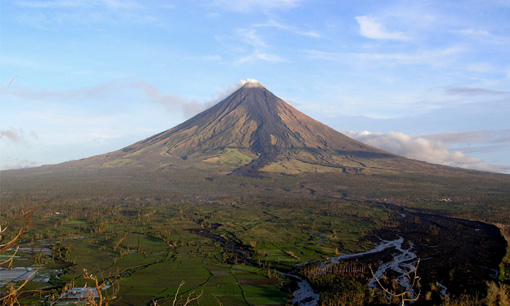Home > Public Advisory > Thunderstorm
Volcanic Advisory

Mayon Volcano’s seismic monitoring network recorded two (2) volcanic earthquakes and one (1) rockfall event during the 24-hour observation period. Moderate emission of white steam-laden plumes was observed creeping downslope around early morning to noon, but was observed to rise up to 150 meters above the summit before drifting south-southwest and southwest in the afternoon. Fair crater glow from the summit could be observed at night. Sulfur dioxide (SO2) emission was measured at an average of 988 tonnes/day on 7 March 2019. Precise leveling data obtained on 25 January-03 February 2019 indicate a slight deflation of the edifice relative to 08-13 December 2018.
Alert Level 2 currently prevails over Mayon Volcano. This means that Mayon is at a moderate level of unrest. DOST-PHIVOLCS reminds the public that sudden explosions, lava collapses, pyroclastic density currents or PDCs and ashfall can still occur and threaten areas in the upper to middle slopes of Mayon. DOST-PHIVOLCS recommends that entry into the six kilometer-radius Permanent Danger Zone or PDZ and a precautionary seven kilometer-radius Extended Danger Zone or EDZ in the south-southwest to east-northeast sector, stretching from Anoling, Camalig to Sta. Misericordia, Sto. Domingo must be strictly prohibited. People residing close to these danger areas are also advised to observe precautions associated with rockfalls, PDCs and ashfall. Active stream/river channels and those identified as perennially lahar-prone areas on all sectors of the volcano should also be avoided especially during extreme weather conditions when there is heavy and prolonged rainfall. Civil aviation authorities must advise pilots to avoid flying close to the volcano’s summit as airborne ash and ballistic fragments from sudden explosions and PDCs may pose hazards to aircrafts.

